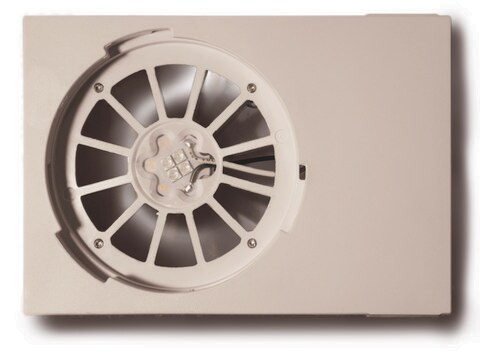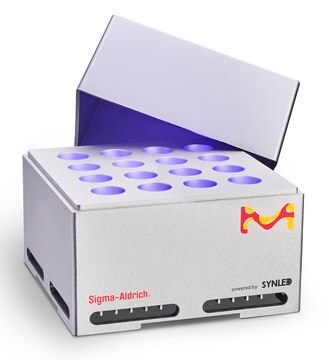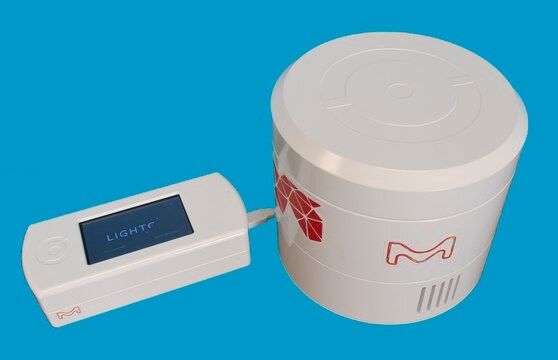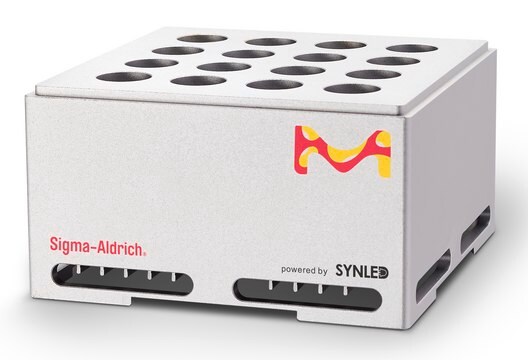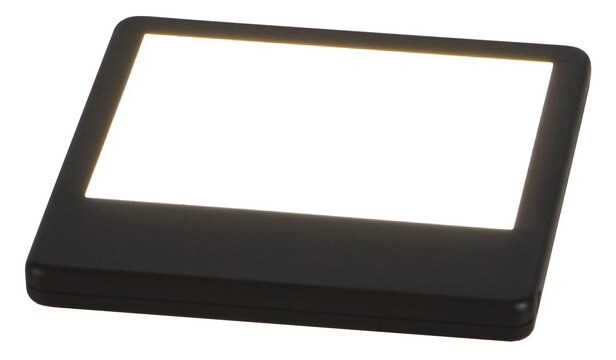Z744035
Penn PhD Photoreactor M2
Sinonimo/i:
photoreactor
About This Item
Prodotti consigliati
Ingresso CA/CC
100 - 240 V AC, 50/60 Hz
Caratteristiche
thermocouple type K-Type Thermocouple
(Touch Screen: 3.5” TFT LCD; 320 x 480 resolution)
Impiego in reazioni chimiche
reaction type: Photocatalysis
reagent type: catalyst
Parametri
(Variable stir bar control 100 - 2000 RPM)
0-95% RH at 10-40 °C
Largh. × alt. × prof.
11.4 cm × 27.2 cm × 27.9 cm
4.5 in. × 10.7 in. × 11.0 in.
Condizioni di spedizione
ambient
Descrizione generale
Features and Benefits
- Modular design allows for use with a variety of wavelengths: 450 nm (included), 420 nm (sold separately), 395 nm (sold separately) and 365 nm (sold separately)
- 360 degree reflective environment maximizes surface area photon capture
- Light shield interlock prevents user exposure to harmful light rays
- Interactive touch screen controls reaction parameters
- Intertek ETL, CE, and CB approved
- User defined parameters including temperature, light intensity, fan speed and stirring
- Auto stop, pause and reset options
- Supports vial sizes gc, 4, 8, 20, 40 ml
- Multi-vial holders are available to allow four 8 mL vials and five 4 mL vials reactions to be run in parallel.
- Temp feedback using a k-type thermocouple
- Z744035-1EA-US: type B
- Z744035-1EA- IN: type D
- Z744035-1EA-EU-E: type E
- Z744035-1EA-EU-F: type F
- Z744035-1EA-UK: type G
- Z744035-1EA-CN: type I
- Z744035-1EA-CH: type J
Photocatalysis Technology Spotlight
Prodotti correlati
Scegli una delle versioni più recenti:
Certificati d'analisi (COA)
Ci dispiace, ma al momento non ci sono COA disponibili online per questo prodotto.
Se ti serve aiuto, non esitare a contattarci Servizio Clienti
Possiedi già questo prodotto?
I documenti relativi ai prodotti acquistati recentemente sono disponibili nell’Archivio dei documenti.
I clienti hanno visto anche
Articoli
Photoredox catalysis is a powerful synthetic methodology to form challenging covalent bonds using light irradiation. It is effective for light-driven polymer and small molecule synthesis.
Csp2- and Csp-hybridized coupling reactions are established catalytic approaches. However, multi-step Csp3- and Csp2-coupling reactions of boronic acids and related derivatives are still limited by ineffective two-electron transmetalation reactions.
While Markovnikov alkene reactivity is very well developed and utilized commonly in the synthesis of commodity and research chemicals, catalytic access to the anti-Markovnikov-selective adducts is a much less-developed endeavor.
Il team dei nostri ricercatori vanta grande esperienza in tutte le aree della ricerca quali Life Science, scienza dei materiali, sintesi chimica, cromatografia, discipline analitiche, ecc..
Contatta l'Assistenza Tecnica.
